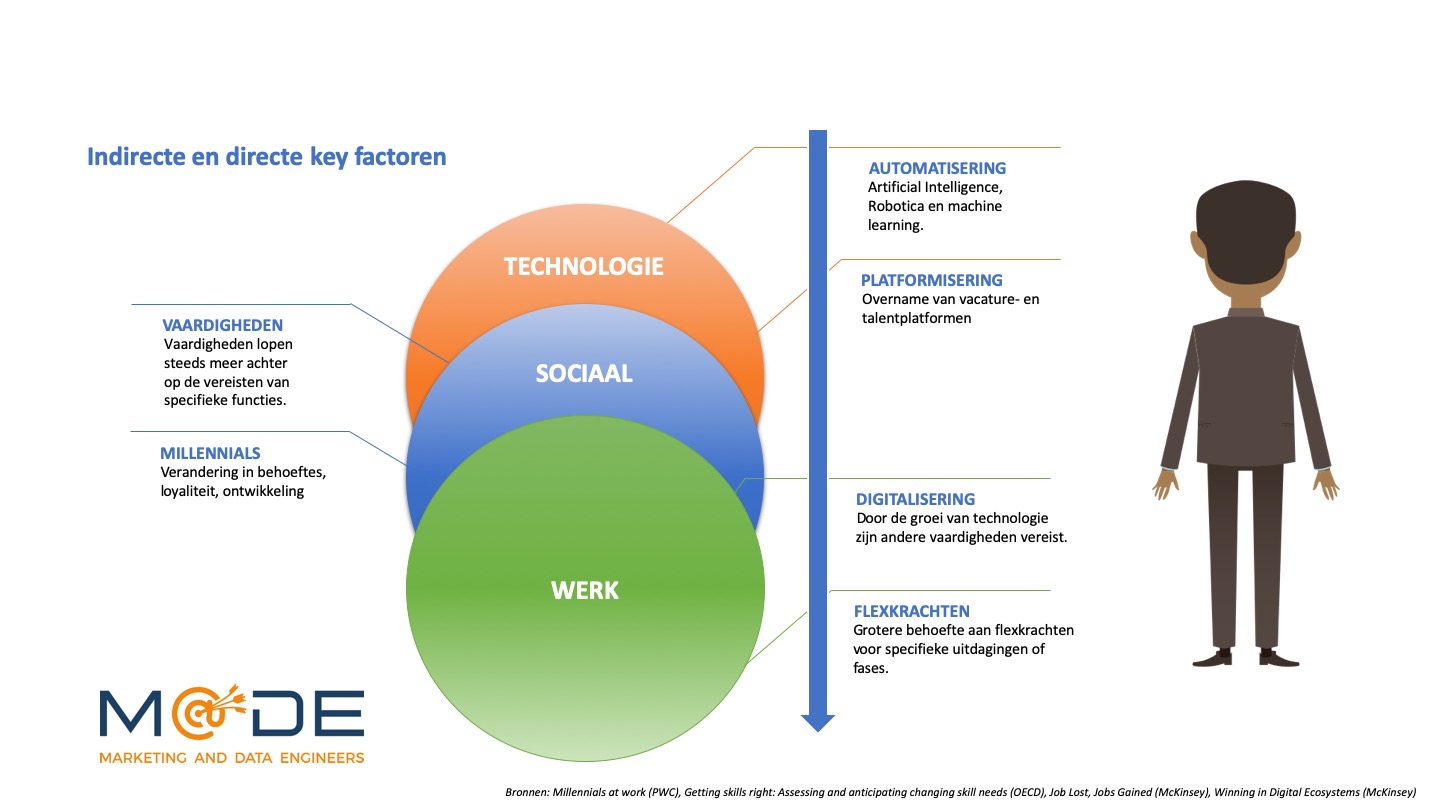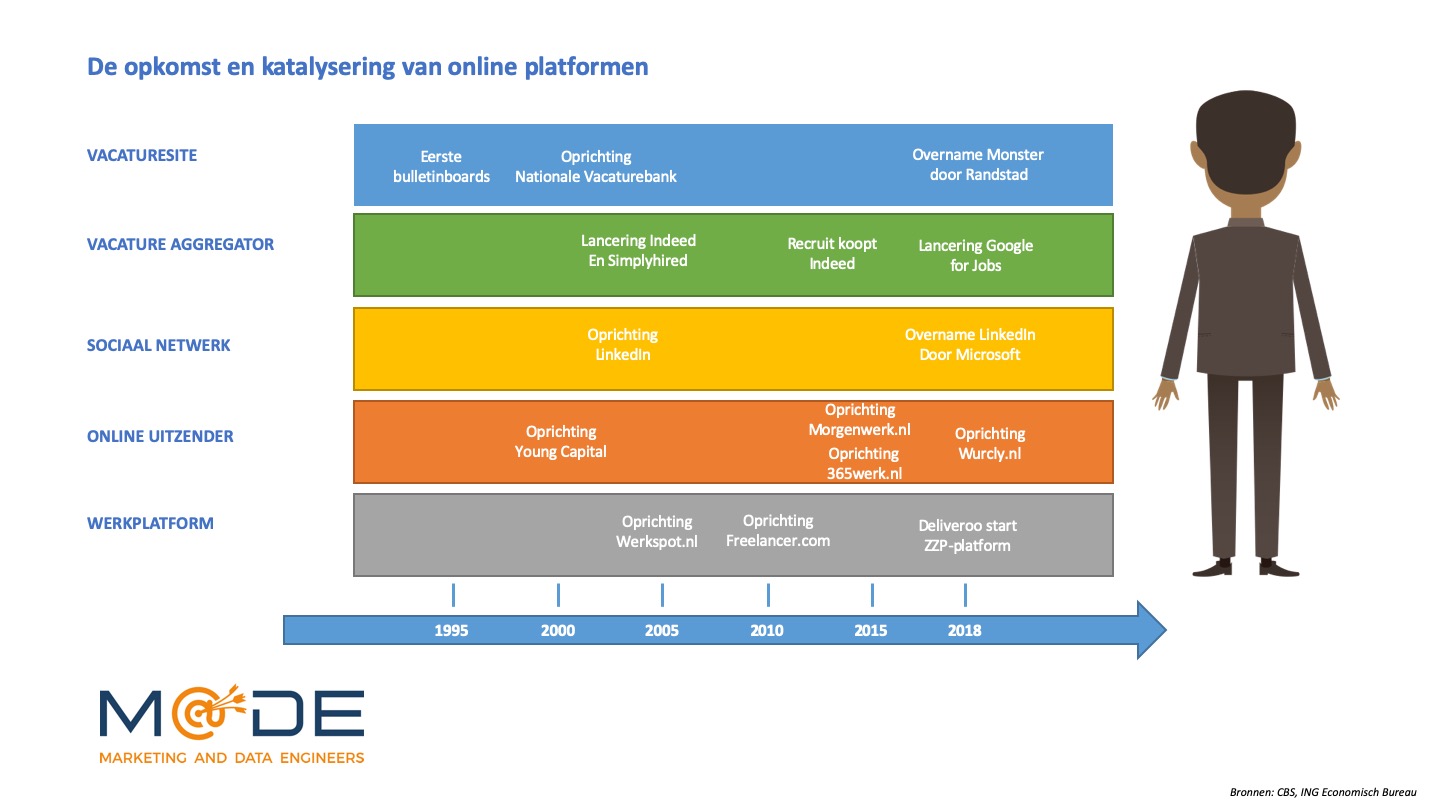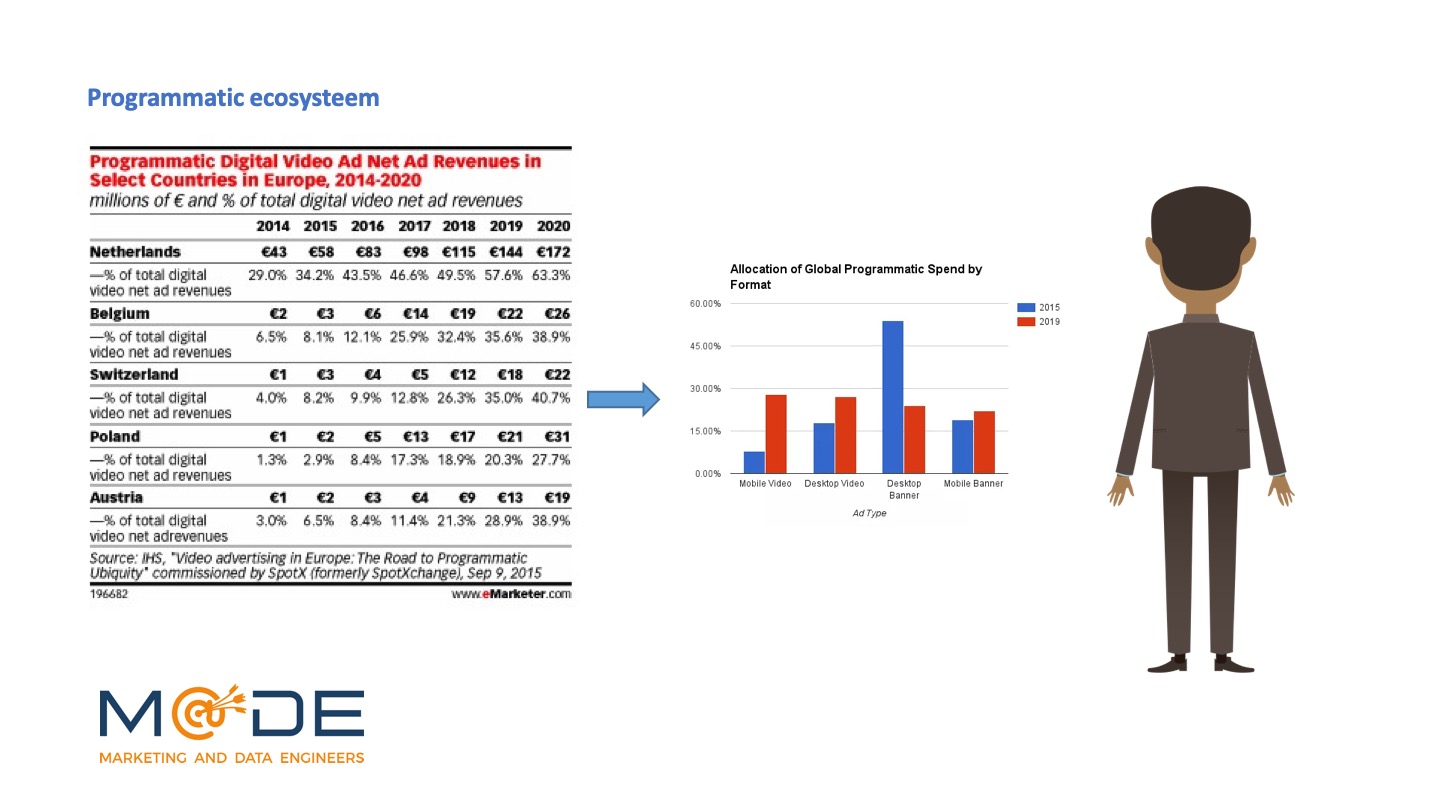
The (future of the) Job Advertisement Market
J
oseph Schumpeter wrote about Creative Destruction as early as 1942: a process that supplies economies with growth in the form of innovative and new technologies and companies. Within the publication of The Innovator’s Method: Bringing the Lean Startup into your Organization in Harvard Business Review, our current time is characterized by extremely rapid changes in social trends, economic factors and technologies.
Why Companies That are Built to Last Underperform the Market – And how to transform them, Foster and Kaplan wrote that at the current churn rate of 75%, the entire Index will in 2027 consist of different companies.
In line with this, Mckinsey’s study A Labor Market That Works: Connecting Talent With Opportunity In the Digital Age shows that only companies that adequately respond to online (talent) platforms succeed with their recruitment and selection strategy. This requires new technology, knowledge and players within the field of Human Resources.
The landscape of job marketing and communication is changing drastically, in particular due to the previously outlined increasing growth of technology and social disruptions. This leads to a completely new business landscape with new players, which in turn requires change and innovation.
However, this additionally leads to challenges or problems at various levels. When considering Kaplan’s Innovation Paradox and Growth Paradox, innovation comes from operational excellence and the best time to innovate is when this is not yet necessary. Given the current speed of change, the
emergence of new players and a lack of operational excellence, many organizations face major challenges. Within this article, however, we focus solely on macro factors.
The issues
Within this article we want to receive a primary answer to the question of what the current job advertisement market looks like globally and how this will develop over the next five years.
Sub-questions are:
- Which are the indirect and direct key factors that influence the job advertisement market?
- What is the role and influence of technology, programming and its evolution?
- Which (premature) recommendations can be made based on the above?
- What does this say exactly?
What does this mean
The rapid growth of technology makes the spectrum of professional skills look different. New and improved skills are required in which technological knowledge is becoming increasingly important. As a result, the gap between companies and job seekers is increasing. Together with the changing generation and needs, the recruitment challenge is increasing and it is difficult to connect talent to organizations in a sustainable way.
The rise of platforms such as Careerbuilder, Glassdoor, Indeed, LinkedIn, Monster, Vault, Xing, and Viadeo are becoming increasingly important due to social and technological changes. These platforms are the main players within the digital transformation of the labor market that is currently taking place. The ability to match talent and companies optimally through these platforms is the absolute key to success.
Technology within Job Advertising
Within online marketing, but mainly within job marketing where micro-targeting plays a major role, we consider it important to look at the ecosystem of programmatic advertising.
Within online marketing, but mainly within job marketing where micro-targeting plays a major role, we consider it important to look at the ecosystem of programmatic advertising.
Platformization and the need for micro-targeting increase the use and spend of Programmatic. Programmatic, however, is still in the Early Adopters phase and is moving towards the Early Majority in the next five years. This is reflected in the width and limited depth of the niche players in the field of Programmatic. As technology further develops, players will disappear and larger players will enter the market with more depth (McKinsey; Winning in Digital Ecosystems). The main trend is the shift to video ánd mobile. To date, Programmatic is still only anticipating to this on a small scale.
Main points
- An effective recruitment campaign requires a presence and connection with all work and talent platforms. Omni presence and connectability are leading factors.
- The full functioning and use of Artificial Intelligence is still of secondary importance. Automated A-B testing, attribution modeling and fingerprinting will be essential and leading in the coming years.
- Focus on and strategy for video and mobile use are vital for the successful recruitment of talent and millennials.
- Machine Learning and fingerprinting must be central to analyze data and thus respond to the widening gap between skills and professional requirements.








